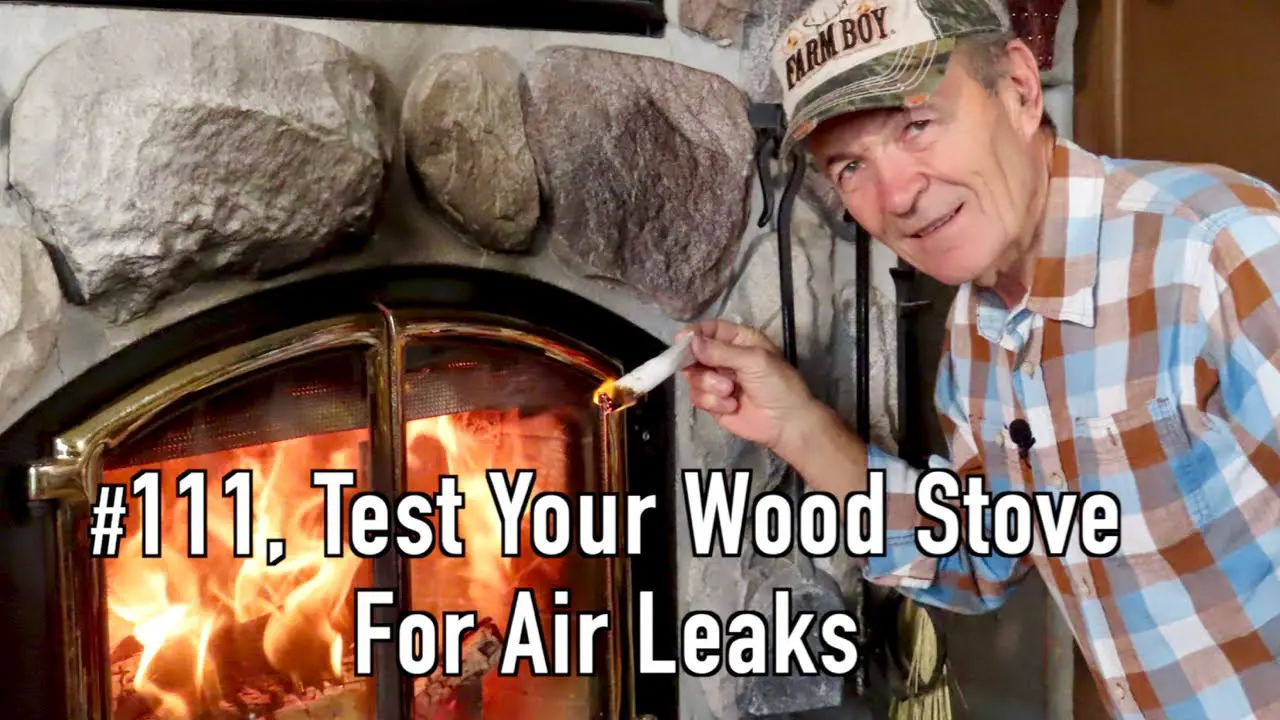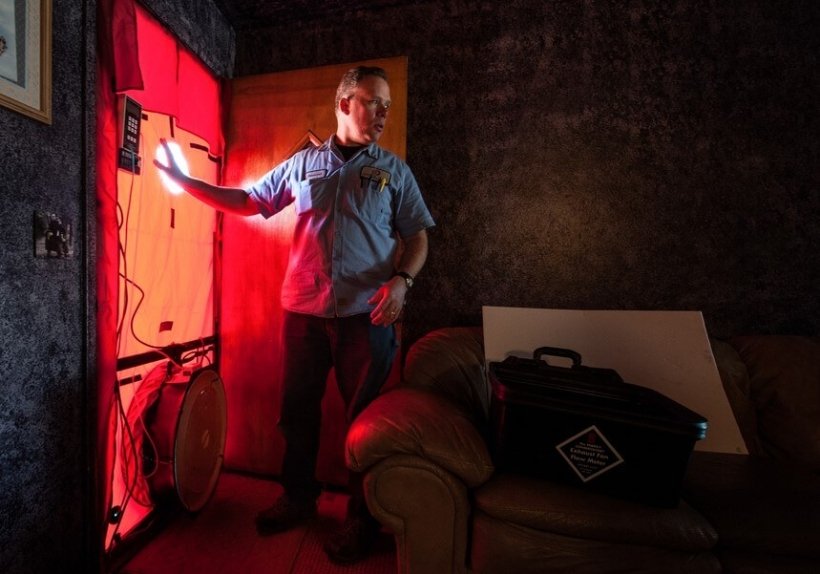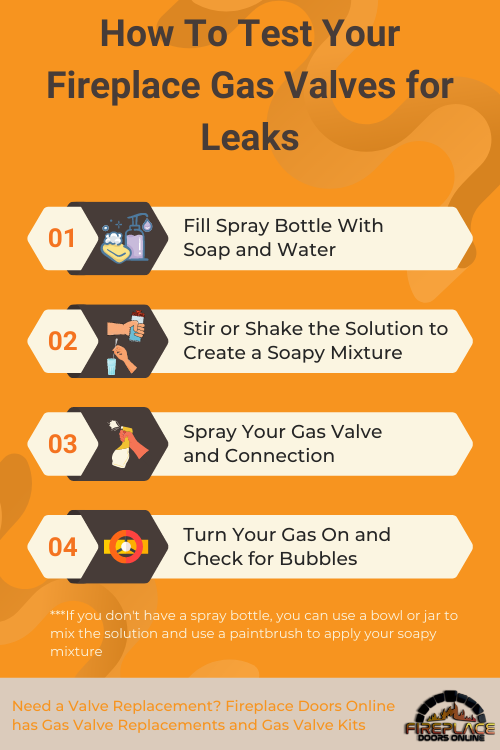To check if a wood stove is leaking, close all doors and windows, then pass a smoke source along the stove’s seams. Where the smoke gets drawn into the stove indicates a leak.
Detect and fix any leaks promptly to maintain safety and efficiency. Leaking wood stoves can release harmful carbon monoxide gases and reduce heating effectiveness. Regular maintenance, including checking door seals and performing smoke tests, ensures your wood stove operates properly.
Practice caution and address any issues promptly to enjoy a well-functioning wood stove.


Credit: www.energy.gov
Signs Of A Leaking Wood Stove
A wood stove can be a great source of warmth and ambiance in your home, but it’s important to ensure that it’s operating safely. Here are some signs that your wood stove may be leaking:
Presence Of Smoke Or Smell
If you notice smoke coming from areas other than the chimney or a strong smell of burning wood inside your home, it could indicate a leak in your wood stove.
Flue Gasses Leaking Inside
Flue gasses leaking inside your home can be a dangerous sign of a leaking wood stove. These gasses should be properly vented through the chimney, so any presence of them indoors could indicate a leak.
Carbon Monoxide
The presence of carbon monoxide can be a severe risk associated with a leaking wood stove. Symptoms of carbon monoxide poisoning include headaches, nausea, and dizziness.
Visible Leaks From The Stove
If you notice visible leaks such as smoke or emissions coming from the stove itself, it’s a clear indication of a leak that needs to be addressed promptly to avoid any hazards.
How To Test For Wood Stove Leaks
Smoke Test with Incense Stick or Smoke Pencil
To test for wood stove leaks, you can perform a smoke test using an incense stick or a smoke pencil. Simply pass the incense stick along all the stove’s seams while the stove is closed and the primary air control is fully open. If the smoke is drawn into the stove, this indicates a leak.
For a more integrated smoke test method, consider placing a smoke pellet inside the wood burner, igniting it at arm’s length, and closing the door. Check for any signs of smoke leakage around the stove, stove pipe, fittings, and under the register plate.
- Ensure the stove is closed and the primary air control is open
- Pass an incense stick or smoke pencil along all seams
- If smoke is drawn into the stove, a leak is present
- Place a smoke pellet inside the wood burner
- Ignite the pellet at arm’s length
- Check for smoke leaks around the stove
- Check for smoke leakage around fittings
Another method is to check for airtightness by inspecting the gasket door seal annually. This ensures that the wood stove remains efficient and safe to use for heating your space.
Diy Methods For Detecting Leaks
Proper maintenance of a wood stove is essential to ensure its safety and performance. Detecting leaks in a wood stove is crucial to prevent potential dangers such as carbon monoxide leakage. By using some simple Do-It-Yourself (DIY) methods, homeowners can easily identify and address any leaks in their wood stoves. Here are some effective techniques to detect potential leaks.
Paper Test
The paper test is a simple yet effective method to check for air leaks in a wood stove. To perform this test, close all the windows and doors. Next, place a piece of paper near the seams and joints of the stove while it is in operation. If the paper flutters, there might be a leakage issue that needs to be addressed.
Narrow Beam Flashlight Technique
Utilizing a narrow beam flashlight can help to detect even the smallest of leaks in a wood stove. During nighttime, turn off all the lights in the room and shine the flashlight around the stove’s seams and door gasket. Any visible light escaping through the joints indicates potential leakage that requires sealing or gasket replacement.
Checking Seals And Gaskets
Regularly inspecting the seals and gaskets of the wood stove is essential for detecting any air leaks. Look for signs of wear, tear, or damage on the seals and gaskets. If any defects are found, it is important to promptly replace them to ensure the stove maintains an airtight seal.

Credit: www.fireplacedoorsonline.com
The Dangers And Risks
To identify a wood stove leak, conduct a smoke test by passing an incense stick, cigarette, or smoke pencil along its seams. If the smoke is drawn into the stove, a leak is present. Alternatively, use a narrow beam flashlight to detect any smoke using its intense light.
Regular maintenance checks are essential to ensure safety.
Carbon Monoxide Poisoning
One of the most significant dangers of a leaking wood stove is the risk of carbon monoxide poisoning. Carbon monoxide is a colorless, odorless gas that can be lethal if inhaled in high concentrations. When a wood stove is not properly sealed or has cracks or gaps, it can leak carbon monoxide into your home, putting you and your family at risk.
Health Implications
Inhaling carbon monoxide can have severe health implications. It can lead to symptoms such as headaches, dizziness, nausea, confusion, and even loss of consciousness. Prolonged exposure to carbon monoxide can result in long-term health issues or even death. It is essential to regularly check for any signs of a leaking wood stove to prevent these health risks.
Potential Fire Hazards
A leaking wood stove also poses potential fire hazards. When hot gases, sparks, or embers escape through cracks or gaps in the stove, they can ignite flammable materials nearby, leading to a house fire. This can be especially dangerous if the leaking wood stove is located near combustible objects such as furniture, curtains, or wooden walls.
To ensure the safety of your home and loved ones, it is crucial to regularly inspect and maintain your wood stove. Look for any signs of carbon monoxide leakage, such as soot stains around the stove or excessive smoke or gas emissions. Additionally, check for any cracks, gaps, or loose seals in the stove’s doors, flue pipe, or chimney. Address any issues immediately and consider professional help if needed. Your diligence in preventing and addressing wood stove leaks can make all the difference in ensuring a safe and healthy living environment.
Addressing Wood Stove Leaks
If you own a wood stove, it’s important to regularly check for leaks to ensure efficient and safe operation. Addressing wood stove leaks promptly can prevent potential health hazards and improve the overall performance of your stove. In this article, we will guide you through the steps of repairing and sealing leaks, regular maintenance, and the significance of professional inspections.
Repairing And Sealing Leaks
Repairing and sealing leaks is crucial in maintaining the efficiency and safety of your wood stove. Leaks can occur in various areas, such as the stove doors, seams, or chimney pipe connections. By following these simple steps, you can easily address wood stove leaks:
- Inspect and Clean: Start by thoroughly inspecting your wood stove for any visible signs of leaks. Check the stove doors, seams, and chimney pipe connections for gaps or cracks. Remove any built-up creosote or debris that might be blocking the joints.
- Identify the Leaks: Perform a smoke test to identify specific areas where the leaks are occurring. Close all doors and windows in the room and create a small fire in your stove. Light a smoke stick and pass it along the stove’s seams, doors, and chimney pipe connections. If the smoke is drawn into the stove, it indicates the presence of a leak.
- Apply Sealant: Once you have identified the leaks, use a high-temperature sealant or gasket to seal the affected areas. Apply the sealant or gasket to the gaps or cracks and ensure a tight seal. This will prevent any air leaks and improve the stove’s efficiency.
Regular Maintenance
Regular maintenance is essential to keep your wood stove in optimal condition and prevent leaks. Here are some important maintenance tips to follow:
- Inspect the Gasket Door Seal: Check the gasket door seal annually for any signs of wear or damage. Replace the gasket if necessary to maintain a proper seal and prevent leaks.
- Clean Chimney and Flue: Regularly clean the chimney and flue to remove any creosote or debris buildup. This will prevent blockage and ensure proper ventilation, reducing the risk of leaks.
- Monitor Wood Quality: Only burn dry, seasoned wood in your stove. Wet or unseasoned wood can produce excessive smoke, leading to increased creosote buildup and potential leaks.
- Check for Cracked or Damaged Parts: Regularly inspect the stove doors, chimney pipe connections, and other components for any cracks or damages. Replace any faulty parts immediately to prevent leaks.
Professional Inspection
While regular maintenance is essential, it’s also crucial to have your wood stove professionally inspected on a periodic basis. A certified professional can thoroughly examine your stove, including the chimney and venting system, to identify any hidden leaks or other potential issues. They can provide expert recommendations and ensure your wood stove is safe and efficient.
By addressing wood stove leaks through repairing and sealing, regular maintenance, and professional inspections, you can enjoy a well-functioning and safe wood stove for years to come.

Credit: www.amazon.com
Frequently Asked Questions For How To Tell If Wood Stove Is Leaking
How Do I Know If My Wood Stove Is Leaking Carbon Monoxide?
To check for carbon monoxide leaks, conduct a smoke test by lighting a smoke pellet in the wood stove and closing the door. Look for smoke leaks around the stove, pipe, fittings, and register plate. Regularly inspect for any signs of smoke leakage to ensure safety.
How Do You Test A Log Burner For Leaks?
To test a log burner for leaks: Place a smoke pellet inside, ignite, close door, and check for smoke leakage.
How Do You Check Wood Stove Seals?
To check wood stove seals, close all doors and windows, then pass an incense stick or smoke pencil along seams. If smoke is drawn into the stove, a leak is present, signaling the need for seal maintenance. Watch instructional videos for visual guidance and further details.
How Do You Test A Wood Stove?
To test a wood stove for leaks, follow these steps: 1. Close all doors and windows. 2. Light a smoke pellet and place it inside the stove. 3. Close the stove door and check for any smoke leakage around the stove, stove pipe, fittings, and under the register plate.
4. If smoke is drawn into the stove, there may be a leak present.
Q1: How Do I Know If My Wood Stove Is Leaking Carbon Monoxide?
A1: To check for carbon monoxide leaks, you can use a carbon monoxide detector near the stove or hire a professional to perform an inspection.
Conclusion
After identifying potential leaks, it’s crucial to address them promptly. Regular maintenance, such as testing the wood stove with smoke pellets, paper, or incense sticks, can prevent potential hazards. Additionally, checking for signs of smoke leakage around the stove, stove pipe, and fittings helps ensure safety.
Stay vigilant and prioritize safety in your wood stove maintenance routine.
